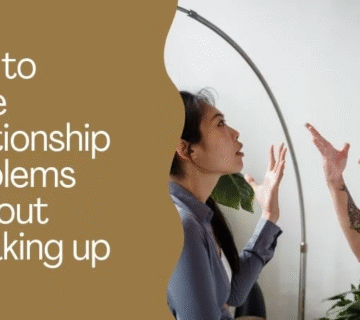Introduction: Understanding the Power of Turn-Ons
What does it really mean to be “turned on” in a relationship? While the phrase often brings to mind physical attraction, the concept runs much deeper in romantic partnerships. A true turn-on represents those special qualities, behaviors, and connections that create and sustain passion, intimacy, and emotional bonding between couples.
This comprehensive guide will explore:
-
The psychology behind what makes someone a turn-on
-
How attraction evolves through different relationship stages
-
The science behind why initial chemistry fades
-
Gender differences in what turns partners on
-
Practical strategies to maintain long-term attraction
Understanding these dynamics can help you build a relationship where passion and connection grow stronger over time.
Defining Turn-Ons in Romantic Relationships
What Does “Turn On” Mean in a Relationship?
A turn-on in relationships operates on multiple levels:
Physical Dimension
-
Sexual chemistry and attraction
-
Sensory responses (scent, touch, voice)
-
Body language and physical presence
Emotional Dimension
-
Feeling deeply understood and accepted
-
Emotional safety and vulnerability
-
Shared joy, laughter, and experiences
Intellectual Dimension
-
Stimulating conversations and debates
-
Mental challenge and growth
-
Shared curiosity and learning
Spiritual Dimension
-
Aligned values and life purpose
-
Mutual respect and admiration
-
Profound sense of connection
The Difference Between Turn-Ons and Love
While turn-ons create attraction, love involves:
-
Commitment through challenges
-
Acceptance of imperfections
-
Willingness to grow together
-
Long-term investment in the relationship
The Science Behind Relationship Turn-Ons
Neurochemistry of Attraction
-
Dopamine: Creates pleasurable anticipation (common in new relationships)
-
Oxytocin: Promotes bonding and attachment (develops over time)
-
Serotonin: Affects obsession levels in early romance
The Role of Novelty
Brain scans reveal that new experiences activate the reward system more powerfully than familiar ones, explaining why new relationships feel more exciting.
Gender Differences in Turn-Ons
What Turns Women On in Relationships?
Research shows women typically value:
-
Emotional connection (88%)
-
Thoughtful gestures (81%)
-
Intellectual stimulation (74%)
-
Physical touch (67%)
*Real-life example: “When my partner remembers small details about my life and checks in on things that matter to me, I feel incredibly turned on by his attentiveness.” – Jessica, 32*
What Turns Men On in Relationships?
Studies indicate men often prioritize:
-
Physical intimacy (85%)
-
Feeling appreciated (79%)
-
Shared activities (72%)
-
Playfulness (66%)
The Evolution of Turn-Ons Through Relationship Stages
Phase 1: The Honeymoon Period (0-18 months)
Characteristics:
-
Intense physical attraction
-
Idealization of partner
-
High dopamine levels
-
Constant excitement
Phase 2: Building Connection (18 months-3 years)
Shift towards:
-
Emotional intimacy
-
Shared vulnerability
-
Oxytocin bonding
-
Reality setting in
Phase 3: Mature Love (3+ years)
Focus on:
-
Security and comfort
-
Mutual growth
-
Conscious relationship work
-
Deep companionship
Why Initial Turn-Ons Fade (And How to Revive Them)
Common Reasons for Fading Attraction
-
Habituation: The brain’s decreased response to familiar stimuli
-
Stress: Daily pressures reducing emotional availability
-
Neglect: Taking the relationship for granted
-
Unresolved conflicts: Built-up resentment
-
Personal changes: Evolving needs and priorities
The 5-Step Revival Plan
-
Rediscovery: Spend quality time learning about your partner anew
-
Novelty: Introduce new shared experiences monthly
-
Appreciation: Practice daily gratitude for your partner
-
Touch: Increase non-sexual physical connection
-
Communication: Discuss needs and desires openly
Maintaining Turn-Ons in Long-Term Relationships
The Gottman Institute’s Magic Ratio
Thriving couples maintain:
-
5 positive interactions for every 1 negative
-
Regular small gestures of affection
-
Conscious effort to nurture connection
Practical Strategies for Lasting Attraction
1. The 6-Second Kiss Rule
Make time for meaningful kisses that last at least 6 seconds.
2. Appreciation Journals
Keep shared journals recording what you admire about each other.
3. Adventure Dates
Commit to trying one new activity together each month.
4. Technology-Free Time
Designate device-free zones or hours for quality connection.
5. Growth Challenges
Set mutual personal development goals to grow together.
When “Turn On Me” Becomes a Concern
Recognizing Relationship Red Flags
-
Consistently avoiding intimacy
-
Frequent criticism or contempt
-
Emotional withdrawal
-
Fantasizing about others regularly
-
Lack of effort in the relationship
Repair Strategies
-
Open, non-judgmental communication
-
Professional couples counseling if needed
-
Recreating positive early relationship experiences
-
Addressing underlying individual issues
-
Recommitment rituals or ceremonies
Read More: What Does a Green Dot Mean on Feeld? Understanding Online Status and Its Implications in 2025
Conclusion: Cultivating Conscious Turn-Ons
Understanding what turn on means in a relationship empowers couples to move beyond fleeting chemistry and build lasting, multidimensional attraction. By recognizing that turn-ons naturally evolve, partners can consciously nurture connection through all seasons of their relationship.
The healthiest relationships view turn-ons not as static qualities but as dynamic processes requiring attention and intention. Through daily small connections, regular novelty, and ongoing appreciation, couples can maintain – and even deepen – the magnetic pull that first brought them together.
For more research-backed relationship insights, visit The American Psychological Association’s relationship resources.








No comment